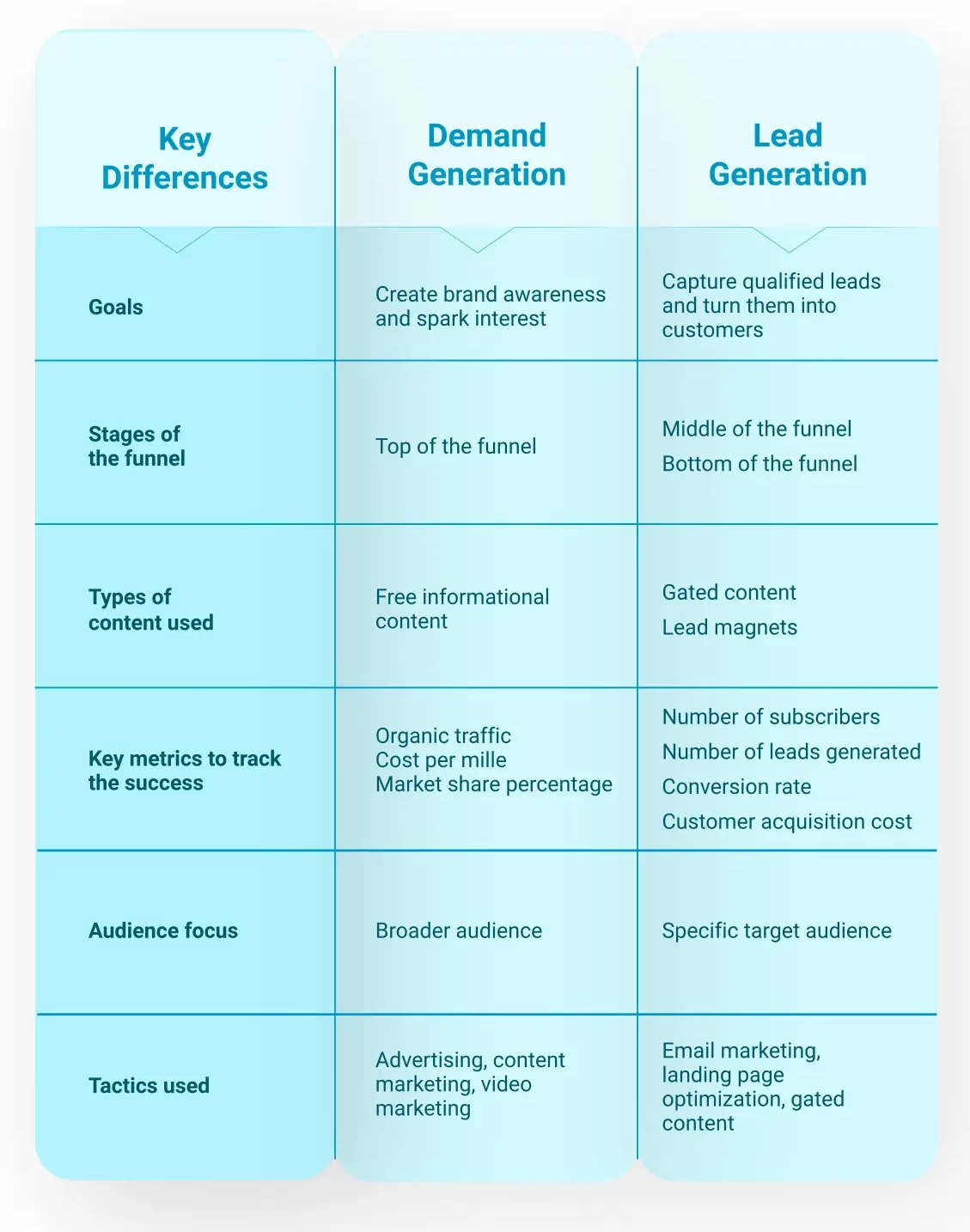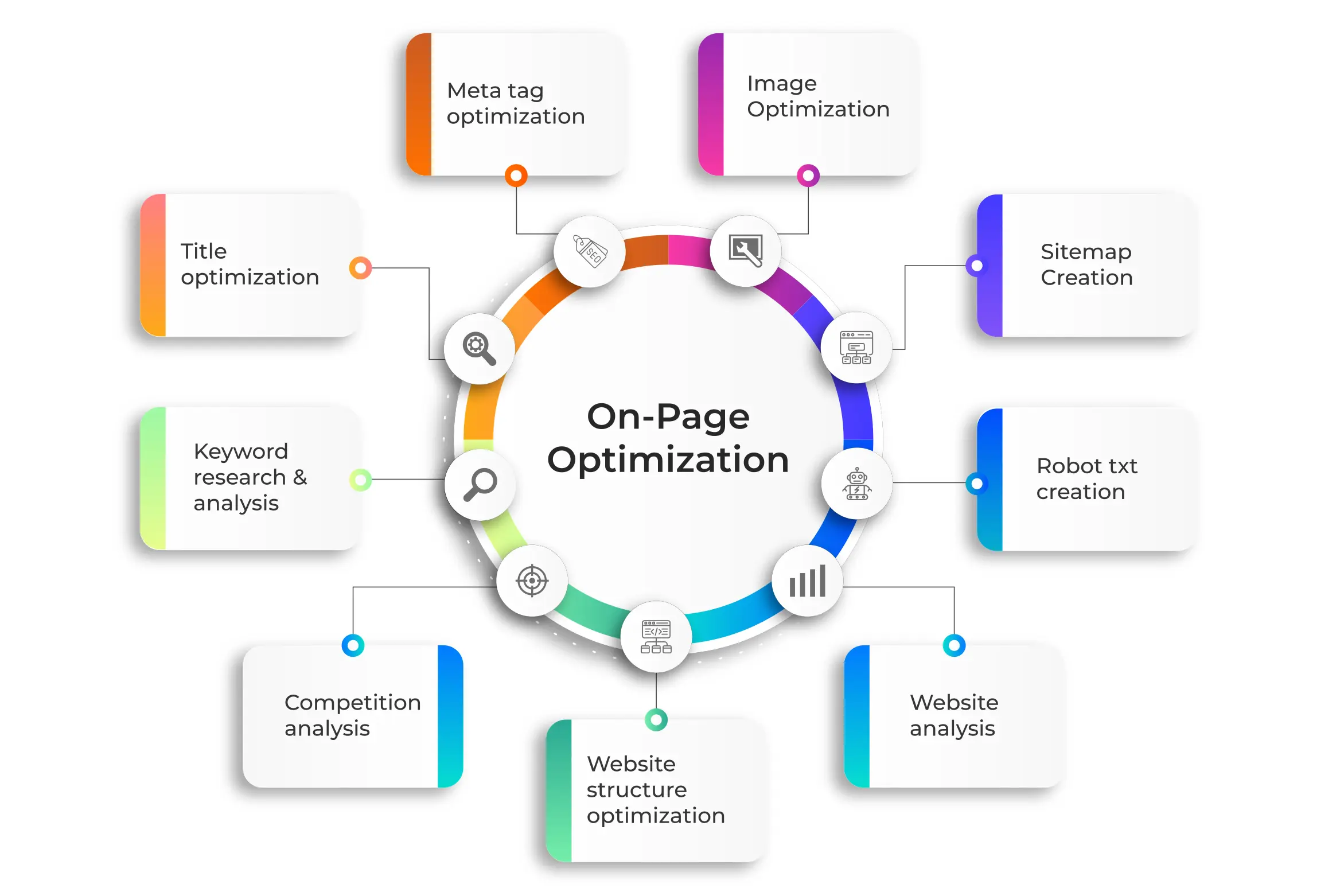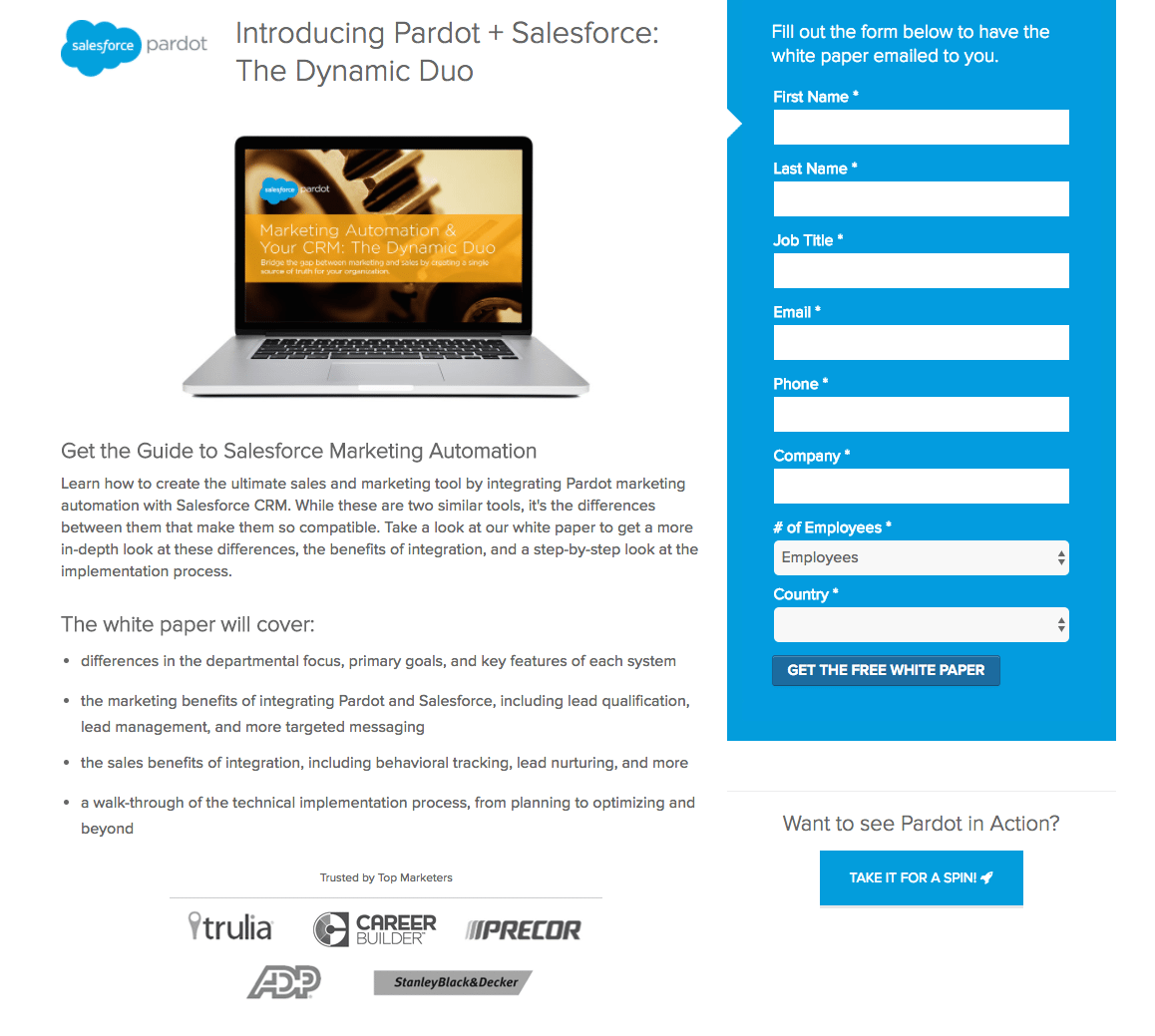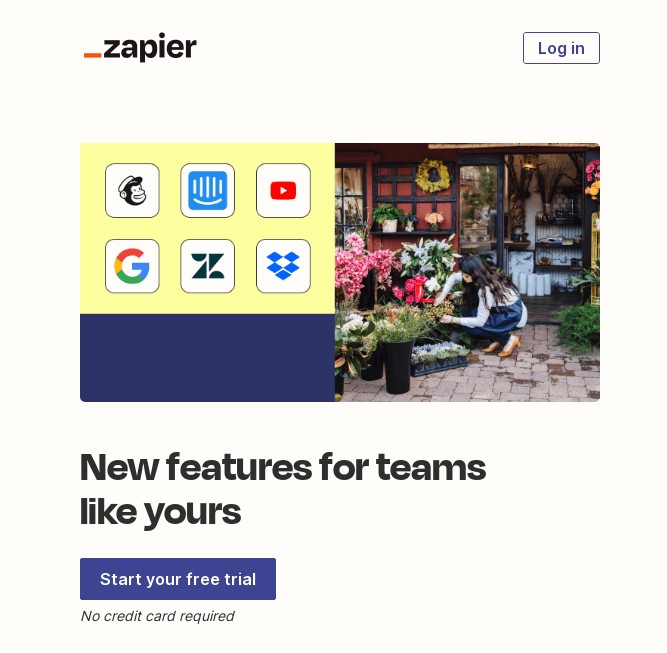When it comes to marketing, there are two terms that often get thrown around: demand generation and lead generation.
While they may seem similar at first glance, they actually refer to two distinct strategies.
Demand generation is focused on creating awareness and interest in your product or service. Lead generation, on the other hand, is focused on capturing the contact information of potential customers.
Understanding the difference between these two concepts is crucial for developing a successful marketing strategy.
If you’re stuck in the lead vs. demand generation dilemma, this post will help you understand both these concepts, their key differences, and the best ways to utilize them.
Let’s get started.
1. What is Demand Generation?
Demand generation is a B2B marketing strategy that focuses on generating awareness, interest, and demand for a brand’s products or services among consumers.
This tactic is primarily used during the awareness stage of a customer’s journey.
Some examples of demand-generation activities include:
- Content marketing – informational blog posts, social media content, etc.
- Advertising – Google Ads and social ads
- Advertising – Google Ads and social ads
- Video marketing – explainer videos and other types of product/service videos
2. What is Lead Generation?
Lead generation is a marketing strategy used for targeting brand-aware consumers and turning them into leads and prospects, and eventually, paying customers.
The goal of lead generation is to grow consumers’ interest in a brand’s products and services and nurture it till the lead becomes a customer. This is a middle-of-the-funnel and bottom-of-the-funnel marketing tactic.
Some examples of lead-generation activities include:
- Using landing pages with CTAs to capture and convert leads
- Sending emails to targeted lists for lead nurturing
- Educating leads about the benefits of a product or service using case studies and whitepapers
- Capturing leads using gated content or free tools
3. The Differences Between Demand Generation and Lead Generation
Now that you have a clear idea of what demand generation and lead generation mean, let us help you understand their key differences.
Here’s a quick reference table that differentiates the two strategies – demand generation vs. lead generation.

Demand generation and lead generation work hand-in-hand, with the former preceding the latter.
You use demand generation to spark an interest in your brand and then leverage lead generation tactics to nurture interested consumers into qualified leads. And further, persuade them to turn into customers.
Lead generation, therefore, follows demand generation.
4. Which is More Important: Demand Generation or Lead Generation?
When it comes to B2B marketing, many marketers face the dilemma of whether to focus on demand generation or lead generation. However, the key to success lies in using both strategies in a cohesive manner to maximize brand awareness, leads, sales, and revenue.
If you don’t invest in demand generation campaigns, you may not generate enough traffic or qualified leads to nurture through your lead generation efforts.
On the other hand, if you generate a lot of demand for your products and services but don’t nurture those leads to encourage conversions, your efforts may be in vain.
That’s why it’s important for you to strike a balance between the two strategies.
However, the right balance will vary for different businesses and there’s no one-size-fits-all solution.
For example, new businesses may need to focus more on demand generation during their initial stages to improve brand recognition and awareness. Established businesses, on the other hand, may already have strong brand recognition and can focus more on lead generation tactics.
You should find the right balance for your business based on your unique needs and leverage both demand generation and lead generation to achieve the best results.
5. How to Combine Demand Generation and Lead Generation
The best way to combine your lead gen and demand gen efforts is to create a cohesive marketing funnel and use different strategies at every stage of the funnel.
Use demand-generation strategies at the top of the funnel and lead-generation strategies at the middle and bottom stages of the funnel.
Let’s discuss the strategies you can use at various stages of your marketing funnel.
1. Demand Generation Tactics for Top-of-the-Funnel Marketing
At this stage, you need to reach as many relevant consumers as you can and ensure they enter your demand generation funnel. This involves reaching a wide audience and attracting the most relevant consumers to your website.
Here are some tactics you can include in your demand generation strategy:
- Thought leadership: Share informative and useful content that helps establish you as an industry expert and builds credibility. According to the latest research, thought leadership involves creating the following types of content

- Social media marketing: Find out which platforms your target audience frequents and create content to engage them on those platforms.
LinkedIn, for example, is a great place to start for B2B marketers. Share useful and engaging content regularly and consistently, and add a link to your website to drive traffic from social media. - Search engine optimization: SEO is by far the best way to generate organic traffic for your website. Use on-page and technical SEO tactics to boost your SERP visibility and rankings, and generate more organic traffic.

If you want help with this, you can partner with a demand generation agency that can design and execute your demand generation strategy to perfection.
2. Lead Generation Tactics for Mid-Funnel and Bottom-of-the-Funnel Marketing
Your demand-generation efforts will generate organic traffic and referral traffic for your website. Next, you need to apply lead-generation strategies to turn them into qualified leads and, eventually, into paying customers.
Here are some lead-generation strategies that you can use:
- Lead capturing: Use sign-up forms, gated content, and pop-ups on your website to capture information about your site visitors and add them to your email list.
Lead capturing should be the first step in your lead generation strategy as it helps you get the relevant information you need to nurture your leads.
Here’s an example of gated content:

Source
- Email marketing: Once you’ve captured the contact information of your website visitors, you can create segmented email lists and send personalized emails to target each customer segment.
Create a drip email campaign, as sending a single email does not really work in lead generation.
You can use emails to build a relationship with your prospects, share useful content with them, promote ongoing deals and offers, and encourage them to make a purchase.
Don’t forget to add a relevant call-to-action (CTA) to encourage interested leads to take the next step.
Check out how Zapier announces new features with this email and provides a clear CTA button for prospects to enroll for the free trial.
- Content marketing: At this stage, you need to create content that differentiates your brand from others, provides social proof, and helps prospects make a purchase decision.
Case studies, client testimonials, and product demo videos work best for this purpose. Adding customer reviews and ratings to your website can also help you drive conversions.
- Free trials and offers: Lastly, you need to give a nudge to leads who’re already considering your products or services but are hesitant to make a decision.
Offering a free trial or some offers and discounts can help them make the buying decision faster.
Most B2B SaaS companies offer free trials, live demos, and freemium plans to increase conversions.
Drive Growth with a Mix of Demand Gen and Lead Gen Strategies!
It’s time to put an end to the debate over whether demand generation or lead generation is more important. The truth is that both strategies are essential for a cohesive B2B marketing strategy.
While demand generation is useful for creating awareness and interest in your brand during the early stages of a prospective customer’s journey, lead generation helps you capture their contact information and guide them towards making a purchase.
To achieve the best results, it’s important to find the right balance between these two strategies and make them work together harmoniously.
One way to do this is by creating a marketing funnel that identifies the various stages of a customer’s journey from awareness to purchase.
By employing the right demand generation and lead generation strategies at different stages of the funnel, you can effectively drive conversions.




